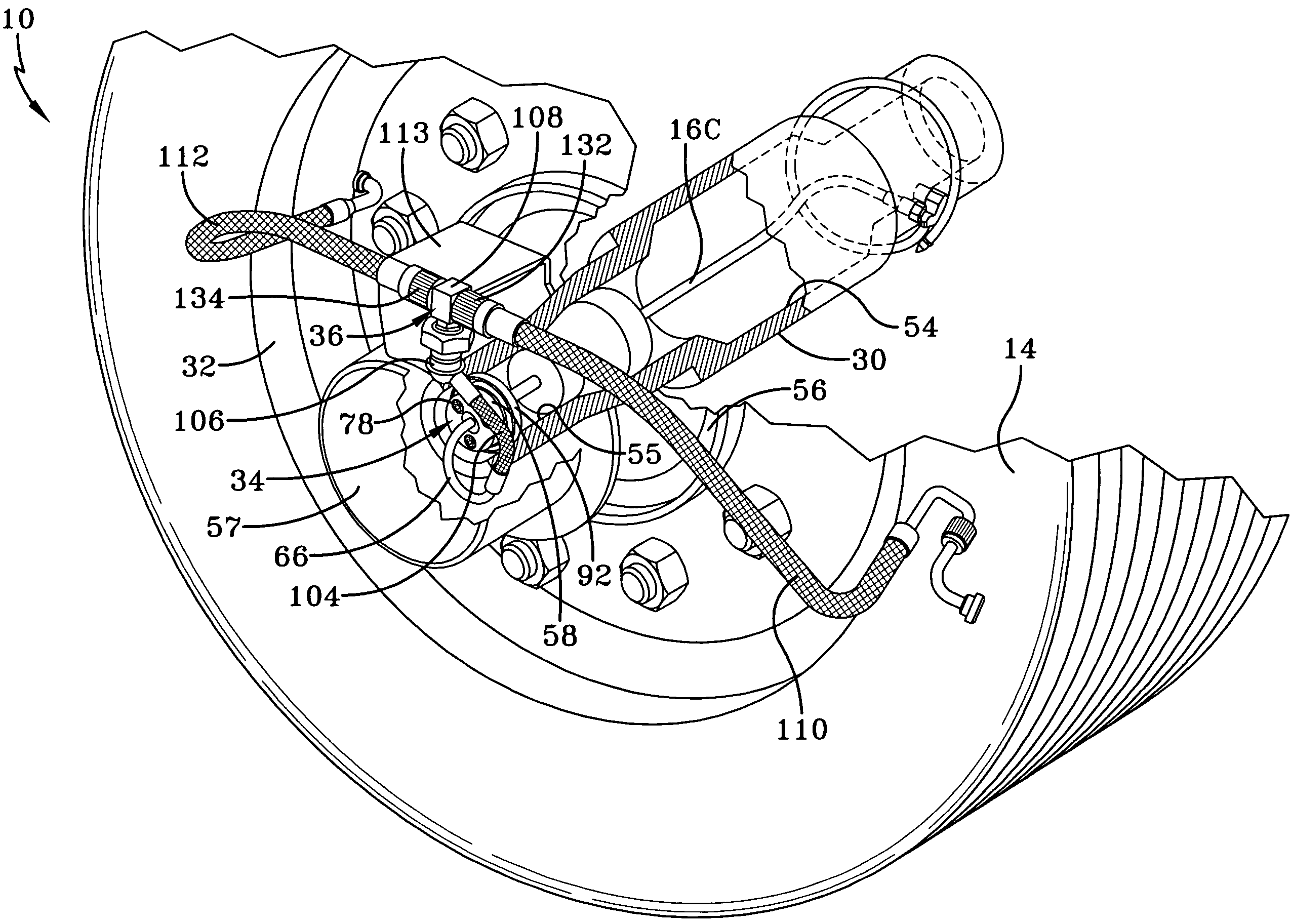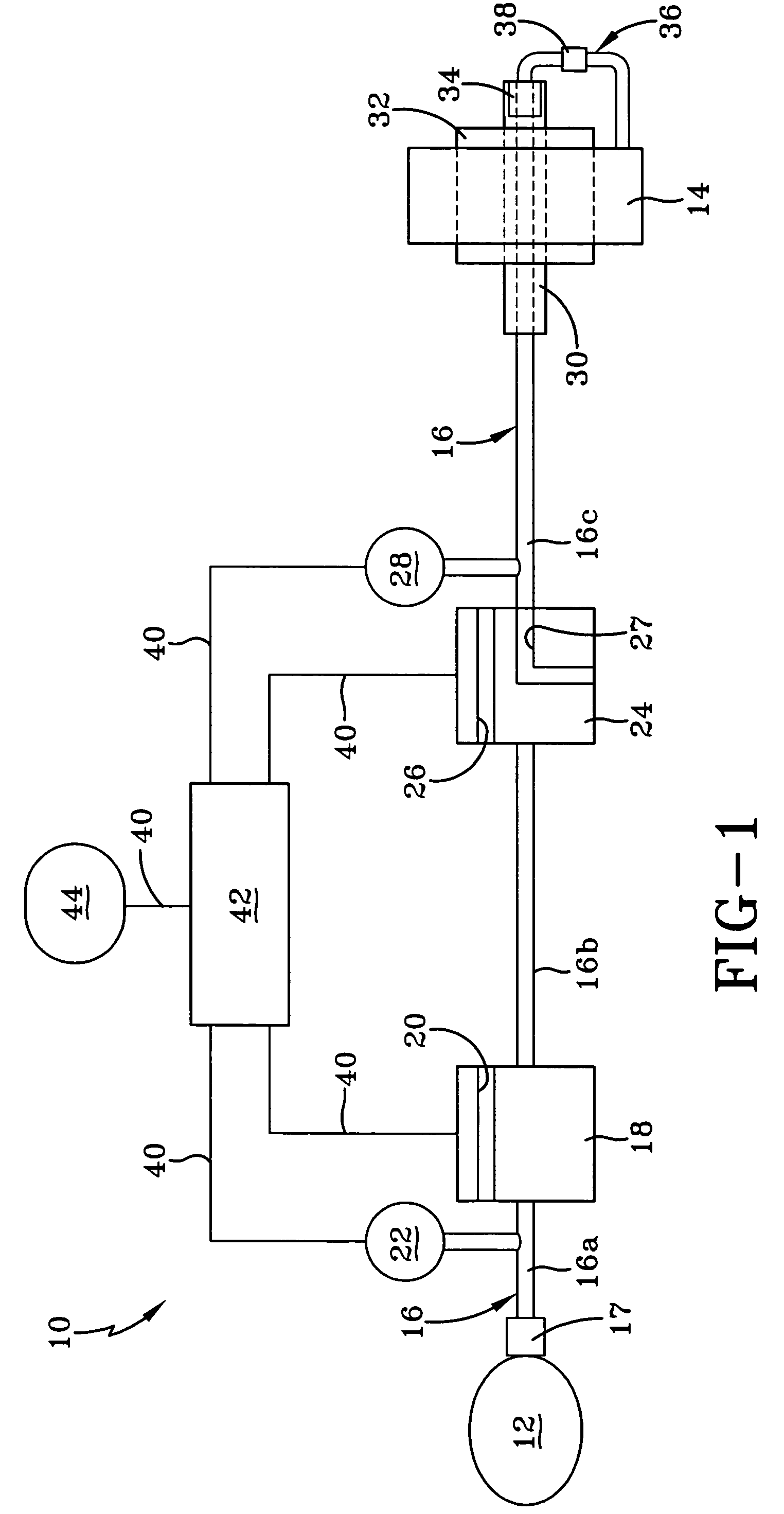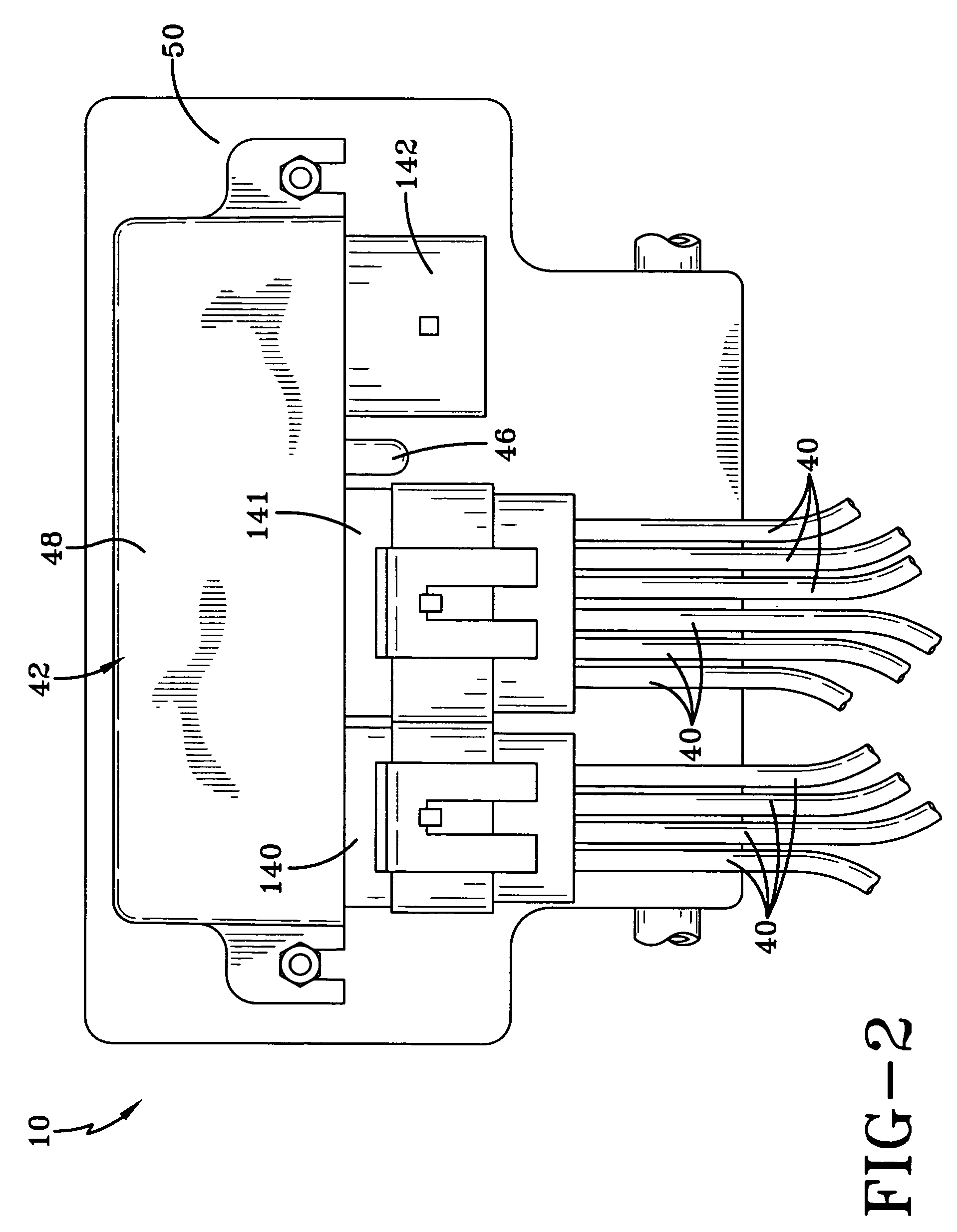Tire inflation system apparatus and method
a technology of tire inflation and tire pressure, which is applied in the direction of tire measurement, vehicle components, transportation and packaging, etc., can solve the problems of difficult manual check and maintain the optimum tire pressure for each and every tire, tire pressure might not be checked, and air may leakage from a tire, etc., to improve the ability to accurately check and monitor the inflation pressure of a vehicle tire.
- Summary
- Abstract
- Description
- Claims
- Application Information
AI Technical Summary
Benefits of technology
Problems solved by technology
Method used
Image
Examples
Embodiment Construction
[0043]The present invention utilizes a tire inflation system of the intermittent type, but with a simple controller that is free of the self-learn or PC interface systems found in prior art systems that are described above. The components of the system of the present invention and the method of control of those components provide more reliable control than systems of the prior art, communication of system problems, and the ability to maintain pressure should a check valve fail. In addition, the rotary union of the system includes several aspects that make it more dependable and likely longer-lived than rotary unions of the prior art. It is to be understood that the drawings and the following description are for purposes of illustrating a preferred embodiment of the invention and not for limiting the same.
[0044]Turning now to FIG. 1, a tire inflation system of the present invention is indicated generally at 10 and is schematically shown. Tire inflation system 10 is a pneumatic system...
PUM
 Login to View More
Login to View More Abstract
Description
Claims
Application Information
 Login to View More
Login to View More - R&D
- Intellectual Property
- Life Sciences
- Materials
- Tech Scout
- Unparalleled Data Quality
- Higher Quality Content
- 60% Fewer Hallucinations
Browse by: Latest US Patents, China's latest patents, Technical Efficacy Thesaurus, Application Domain, Technology Topic, Popular Technical Reports.
© 2025 PatSnap. All rights reserved.Legal|Privacy policy|Modern Slavery Act Transparency Statement|Sitemap|About US| Contact US: help@patsnap.com



